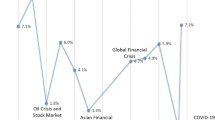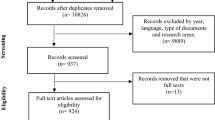Abstract
Zoonoses occur at the interface of human and animal disease and partly because their impact and management fall across two sectors they are often neglected. The Global Burden of Disease captures the impact of zoonoses on human health in terms of disability-adjusted life years (DALYs). Based on this, we estimate that in low income countries, zoonoses and diseases which recently emerged from animals make up 26 % of the DALYs lost to infectious disease and 10 % of the total DALYs lost. In contrast, in high income countries, zoonoses and diseases recently which emerged from animals represent less than 1 % of DALYs lost to infectious disease and only 0.02 % of the total disease burden. We present a framework that captures the costs of zoonoses and emerging disease to human, animal and ecosystem health in terms of cost of treatment, cost of prevention, health burden and intangible and opportunity costs. We also discuss how ecohealth concepts of transdisciplinarity, participation and equity can help in assessing the importance of zoonoses in developing countries and illustrate these with an example of assessing milk-borne disease.
Similar content being viewed by others
Notes
Cumulative number of confirmed human cases of avian influenza A/(H5N1) up to 22 July 2010 reported to WHO.
References
Anon, 2010. Report of Priority Zoonotic Diseases, AIZIP technical team meeting held in the Safari Park Hotel, Nairobi 24th March 2010.
Asonganyi, T., Hengy, C., Louis, J.P. and Ghogomu, N.A., 1991. Reactivation of an old sleeping sickness focus in Mamfe (Cameroon): epidemiological, immunological and parasitological finding, Revue d'Epidémiologie et de Santé Publique, 39, 55–62.
Bennett, R., Christiansen, K. and Clifton-Hadley, R., 1999. Preliminary estimates of the direct costs associated with endemic diseases of livestock in Great Britain. Preventive veterinary Medicine, 9, 39(3),155-71.
Cataldi A. and Romano, M.I., 2007, Tuberculosis caused by Other Members of the M. tuberculosis Complex, in: In Palomino J C, Leão S C, Ritacco V, eds. Tuberculosis 2007: from basic science to patient care. www.tuberculosistextbook.com. Accessed April 19th 2011
Cole, D.C., Crissman, C.C. and Orozco, A., F., 2006, Canada's International Development Research Centre's eco-health projects with Latin Americans: origins, development and challenges, Canadian Journal of Public Health, 97(6), I8-14.
Deaton, A., Fortson, J. and Tortora, R., 2010. Life (evaluation), HIV/AIDS, and death in Africa. In E. Diener, J. Helliwell, and D. Kahneman (eds.), International Differences in Well-Being, (Oxford University Press, Oxford)
Duraiappah, A.K., Roddy, P.V. and Parry, J.E., 2005. Have participatory approaches increased capabilities?, (IISD Publications Centre, UK).
Grace, D. and Randolph, T., 2009. Development of a participatory methodology to prioritise milk borne disease in data scarce environments. In: J.R. Newton and D. Pfeiffer (eds) Society for Veterinary Epidemiology and Preventive Medicine Proceedings: London, UK 1-3 April, 2009.
Grace D, Gilbert K, Lapar L, Unger F, Fèvre F, Nguyen-Viet H, and Schelling E, 2010, Zoonotic Emerging Infectious Disease in Selected Countries in Southeast Asia: Insights from Ecohealth, Ecohealth Journal, 1-8.
Jones, K.E., Patel, N.G., Levy, M.A., Storeygard, A., Balk, D., Gittleman, J.L. and Daszak, P. 2008. Global trends in emerging infectious diseases. Nature. 451, 990–993.
King, C.L., and Freedman, D.O., 2000. Filariasis. In: G.T. Strickland, Hunter’s Tropical Medicine and Emerging Infectious Disease, (8th ed.), (W.B. Sanders Company, Philadelphia).
Kristjanson, P., Reid, R., Dickson, N., Clark, W., Romney, D., et al. 2009. Linking research knowledge with action: Lessons from sustainable development livestock projects, Proceedings of the National Academy of Sciences of the USA 106(13), 5047-5052
Kuchenmüller, T., Hird, S., Stein, C., Kramarz, P., Nanda, A. and Havelaar, A.H., 2009. Estimating the global burden of foodborne diseases--a collaborative effort, Eurosurveillance 14(18), 19195.
Lebel, J., 2003. In Focus: Health. An Ecosystem Approach, (IDRC, Ottawa)
Maudlin, I., Eisler, M.C. and Welburn, S.C., 2009. Neglected and endemic zoonoses, Philosophical Transactions of the Royal Society of London B Biological Science, 364(1530), 2777-87.
Murray, C.J., Salomon, J.A. and Mathers, C., 2000. A critical examination of summary measures of population health, Bulletin of the World Health Organisation, 78 (8), 981-94.
Perry, B. and Grace, D., 2009. The impacts of livestock diseases and their control on growth and development processes that are pro-poor, Philosophical Transactions of the Royal Society of London B Biological Science, 364 (1530), 2643-55.
Perry B., Randolph T., McDermott J., Sones K. and Thornton P., 2002. Investing in animal health research to alleviate poverty, International Livestock Research Institute, Nairobi
Rosenfield, P.L., 1992. The potential of transdisciplinary research for sustaining and extending linkages between the health and social sciences. Social Science and Medicine, 35, 1343–1357
Roth, F., Zinsstag, J., Orkhon, D., Chimed-Ochir, G., Hutton, G. et al., 2003. Human health benefits from livestock vaccination for brucellosis: case study. Bulletin of the World Health Organisation, 2003, 81(12), 867-76.
Rozdilsky, I.D. and Stone, L.S., 2001. Complexity can enhance stability in competitive systems. Ecology Letters, 4, 397-400.
Schelling, E., Grace, D., Willingham, A.L. and Randolph T.F., 2007. Research approaches for pro-poor control of zoonoses. Food and Nutrition Bulletin 28 (2 Supplement), S345-S356.
Schlundt, J., Toyofuku, H., Jansen, J. and Herbst, S.A., 2004. Emerging food-borne zoonoses, Revue Scientifique et Technique, 23(2), 513-33.
Utzinger, J. and de Savginy, D. 2006. Control of neglected tropical diseases: integrated chemotherapy and beyond. PLoS Med 3(5): e112. doi:10.1371/journal.pmed.0030112.
Waltner-Toews, D., 2009. Ecohealth, a primer for veterinarians, Canadian Veterinary Journal, 50 (5), 519–521.
World Bank, 2010. People, pathogens and our planet, (World Bank, Washington)
Zinsstag, J., Schelling, E., Waltner-Toews, D. and Tanner, M., 2011. From “one medicine” to “one health” and systemic approaches to health and well-being, Preventive Veterinary Medicine, 101 (3-4), 148-156.
Author information
Authors and Affiliations
Corresponding author
Additional information
This paper is part of a special supplement on assessing and managing urban zoonoses and food-borne disease in two African cities (Nairobi, Kenya and Ibadan, Nigeria).
Rights and permissions
About this article
Cite this article
Grace, D., Gilbert, J., Randolph, T. et al. The multiple burdens of zoonotic disease and an ecohealth approach to their assessment. Trop Anim Health Prod 44 (Suppl 1), 67–73 (2012). https://doi.org/10.1007/s11250-012-0209-y
Accepted:
Published:
Issue Date:
DOI: https://doi.org/10.1007/s11250-012-0209-y




